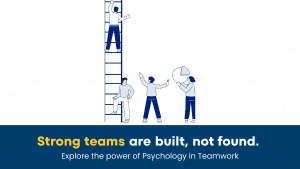Job Performance Prediction: A Bridge to Effective Succession Planning and Leadership Growth
Introduction
Have you ever wondered what separates a successful company from an average one? The key lies in effective succession planning and leadership growth. These two elements are crucial for the long-term sustainability and growth of any organisation. But how do you identify the right individuals for leadership roles? This is where job performance prediction comes into play. By leveraging advanced analytics and data-driven insights, companies can predict employee performance and identify future leaders. In this article, we will first understand the importance of succession planning and then explore how job performance prediction contributes to effective succession planning and leadership growth.
Understanding the Importance of Succession Planning
Succession planning is a strategic process that aims to identify and develop potential leaders within an organisation to fill key roles in the future. It ensures that the company is prepared for any leadership changes, be it due to retirements, promotions, or unforeseen circumstances. An effective succession plan helps maintain continuity, minimizes disruptions, and ensures that the organisation’s vision and goals are carried forward seamlessly. Planning for the future and putting the right people in the right positions based on their competencies and skills is crucial to achieving long-term goals.
A well-thought-out succession plan is vital for the sustained success of any company. It ensures that talented employees are prepared to step into leadership positions when the need arises. This proactive approach prevents a leadership vacuum and reduces the risk of making hasty and potentially costly external hires. Moreover, employees who see clear career paths and growth opportunities within the organisation are more engaged and motivated to perform at their best.
The traditional methods of succession planning rely heavily on subjective evaluations and gut feelings, however, this often leads to biased decisions and overlooking hidden talents. This approach lacked data-driven insights, making it difficult to identify individuals with true leadership potential. This is why, in today’s data-driven world, making objective and accurate predictions is highly necessary. Using various tools, organisations can predict employees’ job performance and uncover potential that may not be evident otherwise.
The Power of Job Performance Prediction
Job performance prediction involves using advanced analytics and machine learning algorithms to analyse employee data and historical performance metrics. By examining various factors such as skills, experience, training, and previous performance, these algorithms can forecast an employee’s future performance and potential for growth.
Enhancing Decision-Making with Data-Driven Insights
Data-driven insights eliminate guesswork and subjectivity in succession planning. With the help of various performance prediction models, HR professionals and leaders can identify high-potential employees objectively. This data-driven approach helps organisations make informed decisions, leading to more effective succession planning. This approach also ensures that high-potential employees are provided with the necessary resources and development opportunities to reach their full potential. This helps to retain top talent and create a pipeline of future leaders within the organisation.
Traditional succession planning methods were often influenced by unconscious biases, such as favouring employees with similar backgrounds or personalities. Job performance prediction relies on data, which minimizes the impact of biases and focuses on objective criteria for identifying potential leaders.
Predicting Job Performance for Leadership Growth
To predict job performance accurately, organisations must first determine the relevant Key Performance Indicators (KPIs) for different roles. These KPIs may include productivity, problem-solving skills, behavioural competencies, leadership competencies, and teamwork abilities, etc.
Once the KPIs are established, the next step is to gather relevant data on employees’ performance. Based on the various departments in the organisation, this data can be in the form of performance appraisals, 360-degree feedback sales figures, customer feedback, or any other measurable metrics. With the help of HR analytics tools, this data is analyzed to identify patterns and trends.
Modern predictive models are built based on historical performance data and KPIs. These models learn from past data to predict future job performance and leadership potential. The models take into account various factors such as past performance, experience, and abilities.
The predictive insights derived from these models are integrated into the succession planning process. This allows the models to make more accurate predictions about who will be successful in a specific job role or as a leader, which helps HR professionals and decision-makers identify employees with the highest potential for growth and leadership roles.
Embracing Data-Driven Succession Planning
For job performance prediction to be effective, organisations must embrace a data-driven culture. This involves encouraging data literacy among employees, promoting the use of analytics tools, and making data-backed decisions across all levels of the organisation.
The implementation of predictive analytics in recruitment, training, and talent development processes will lead to the identification, grooming, and nurturing of the right individuals for future leadership positions. It can also help organisations optimize their training and development processes to ensure effective leadership development.
Conclusion
Job performance prediction is a game-changer for effective succession planning and leadership growth. By harnessing the power of data and advanced analytics, organisations can identify high-potential employees objectively and make informed decisions. This proactive approach to talent management ensures that the right people are in the right roles at the right time. As businesses continue to embrace data-driven practices, job performance prediction will be the driving force behind building strong leadership pipelines and securing a prosperous future
Traitfit’s Succession Planning & Leadership Assessment is an outstanding solution that matches with these current methodologies, giving significant insights to unlock talent’s full potential and promote organisational success. Organizations may assure a brighter future with strong and skilled leaders at the top due to Job Performance Prediction paving the path for successful Succession Planning.


